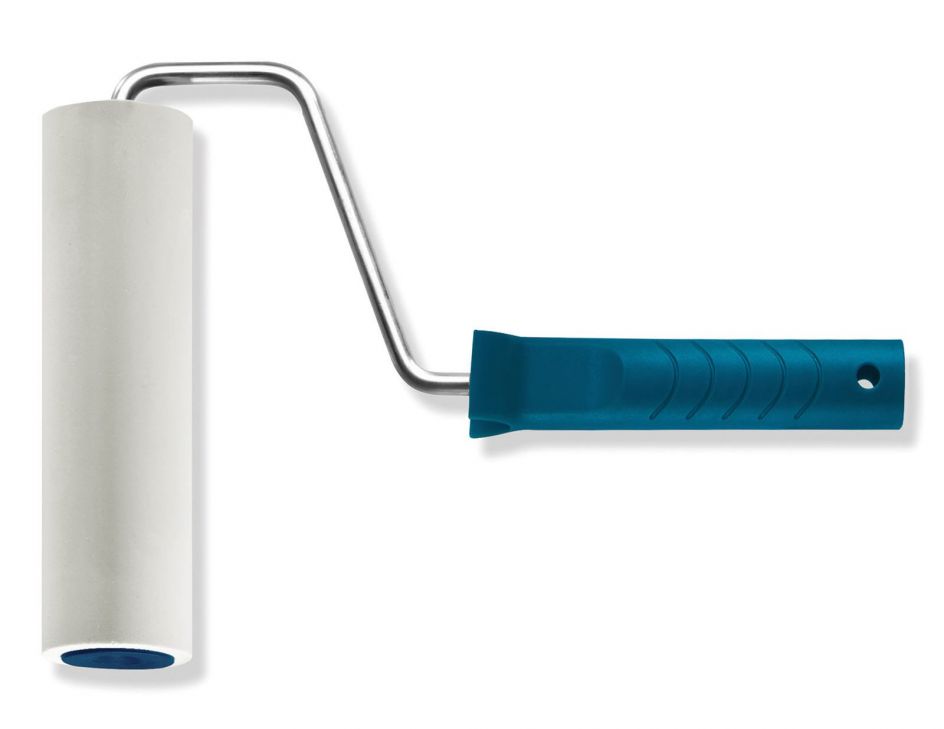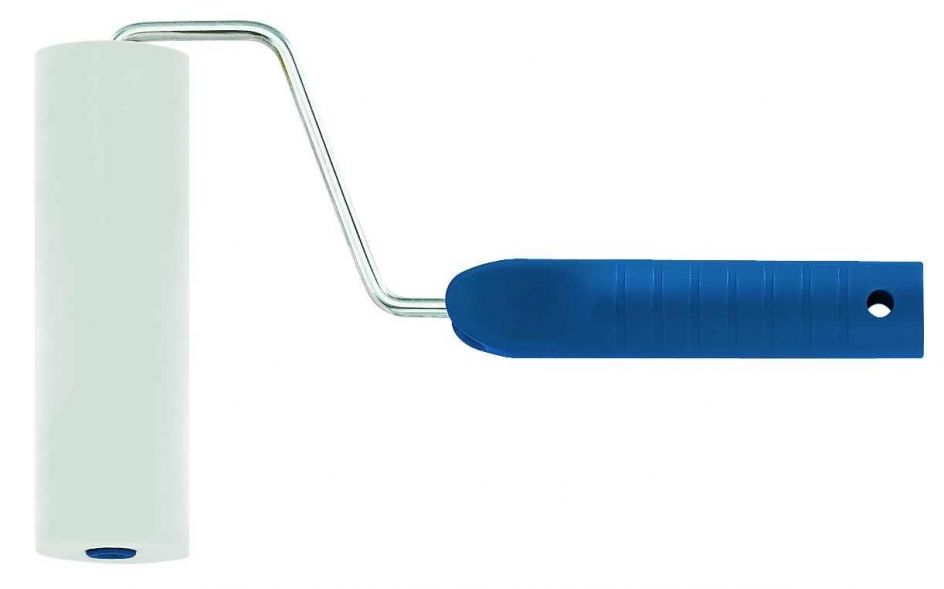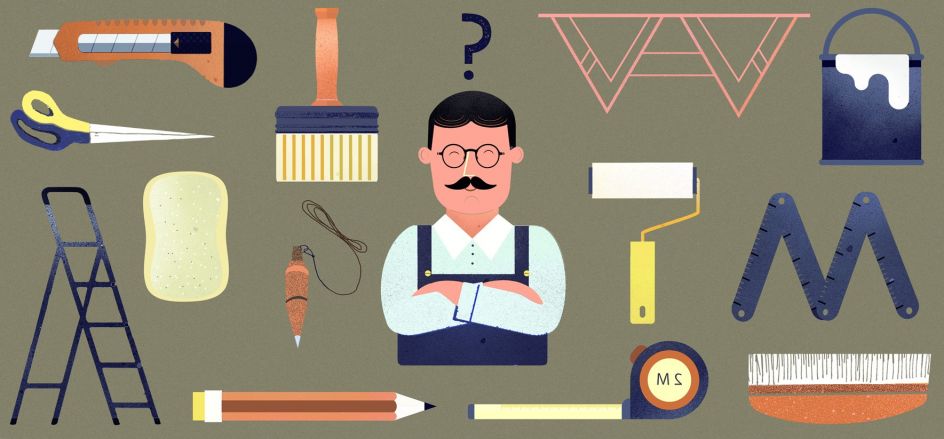The wallpapering roll, also known as wallpaper roller, pressure roller or seam roller, can be used as an alternative to the Wallpapering Brush to press the wallpaper on and smooth it out.
For wallpapers with delicate surfaces which might be damaged by a brush, the wallpapering roll is the tool of choice. This includes all types of foil wallpapers (e.g. metal and effect wallpapers), various textile variations (e.g. flock wallpapers), as well as very thin or fine paper wallpapers (e.g. silk paper).
Wallpapering Roller - Variations
Wallpaper rollers have a short plastic handle which comes in many colours and often also with a small hole so it can be hung for easy storage. Some models have wooden handles.
The handle holds a movable, L-shaped metal holder (usually about 6 - 8 mm in diameter) to which the actual roller element (width: about 15 - 20 cm) is attached (slotted in or screwed in). The roller consists of a hollow roll element (mostly made of plastic) and an outer element or "jacket" (usually made of materials like foam rubber, PU foam, natural rubber or silicon). The strength of the outer element differs from model to model; the same is true for the diameter of the roller. The surface is smooth and closed.

The roll can be replaced if necessary (e.g. due to being soiled or broken) and is available separately. The roller is also available in various colours - from classic white to sunshine yellow or night blue.
The price for this tool depends on material and production quality and ranges between 5 and 50 Pounds. Foam rubber rolls are generally more expensive than those made from PU foam, as foam rubber allows for a softer, more gentle approach and thus protects delicate wallpaper surfaces. Silicon rolls are often used by professionals and are consequently more pricey. Another possible difference in price can be down to the handle (plastic vs. a more robust wooden handle).
For DIY enthusiasts, an inexpensive model is fine, as long as it provides the following quality criteria:
- The metal holder must be safely attached to the handle and the roll. There is nothing worse than if the holder moves around and makes pressing the wallpaper down and smoothing it out sheer torture.
- It should also have a strong enough handle (especially when it comes to plastic handles!) so it doesn't break in the middle of the wallpapering process.
- The roller and/or the roll material mustn't be damaged as otherwise it could get caught in the wallpaper surface, which is especially problematic when it comes to structured wallpapers or those made of natural materials.
Using the wallpapering roller
Wallpapering brushes and rollers differ in just one significant way, and that is the pressure needed when working. With the roller, there is a certain danger to use too much pressure on the wallpaper. Remember: Only use as much pressure as absolutely necessary, especially when working with structured wallpapers - otherwise the lovely structure pattern might just be flattened.
Hold the length (or strip) of wallpaper along the previously marked plumb line or the previous length and use the roller to gently press it on to achieve a first basic contact with the wall and an accurate line.
Then smooth it out by gently moving your roller from top to bottom and from the middle to the edges. Air bubbles and creases can be removed in this manner, and the wallpaper is attached to the wall surface safely and without any visual damage.
For larger air bubbles, carefully loosen the length of wallpaper from the side or the bottom (depending on where the bubble sits) and let the air escape, then smooth it out again. The same process is used to remove creases.
Cleaning and storing wallpapering rollers
No matter if the roller is white or any other colour - it should always be stored in a clean, fluff-free and dirt-free state. This is very important as dirt can scratch and damage the wallpaper surface. Make sure that it remains paste-free. If you do happen to find wallpapering adhesive on the roller, wipe it off with a damp cloth immediately. The roller should be completely dry before you start using it again.

There is a trick that will help you remove dirt particles and fluff or lint from the roller (cloths aren't always the best thing to use as they can get stuck on the roller or not move very smoothly over it). Take a piece of transparent cling film or adhesive tape and carefully remove the dirt with it. If your roller is discoloured or the dirt sits deeper, clean your roller in water with a little bit of washing-up liquid, using a soft brush, and make sure it dries completely afterwards. Sometimes replacing the roll is a quicker and more effective solution, especially when it comes to more serious contamination or discolouration.
Check the roller surface immediately after wallpapering and remove any dirt straight away. In order to keep your wallpapering roller clean and protect it from dust when not in use, wrap it in cling film and store it in a clean, dry place.
Lesson: The Seam Roller
At first sight, seam rollers look like miniature wallpapering rollers. However, they come in a variety of types and have one specific task to fulfil. They are used to smooth out the edges of wallpaper strips accurately and safely so that there is no visible "cut" between lengths and the overall picture is seamless. Find more about this little super-helper in another blog we put together especially to explain this in more detail.


